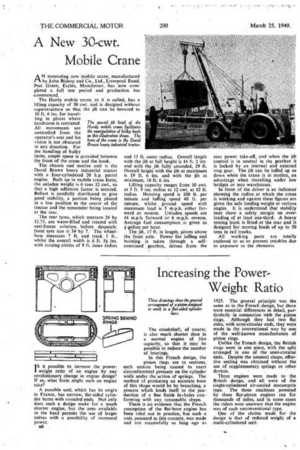Increasing the Power Weight Ratio
Page 16

If you've noticed an error in this article please click here to report it so we can fix it.
iS it possible to increase the powerI weight ratio of an engine by any revolutionary change in engine design? If so, what form might such an engine take?
A possible unit, which has its origin in France, has narrow, flat-sided cylinder bores with rounded ends. Not only does such a design make for a much shorter engine, but the area available in the head permits the use of larger valves with a possibility of increased power. The crankshaft, of course, is also much shorter than in a normal engine of like capacity, so that it may be possible to reduce the number of bearings.
In this French design, the piston rings are in sections, each section being caused to exert circumferential pressure on the cylinder walls under the action of springs. The method of producing an accurate bore of this shape would be by broaching, a process which lends itself to the production of a fine finish in .1 holes conforming with any reasonable shape.
There is no evidence that the French conception of the flat-bore engine has been tried out in practice, but such a unit, patented in this country, was made and ran successfully as long ago as 1925. The general principle was the same as in the French design, but there were essential differences in detail, particularly in connection with the piston rings, Although they had two flat sides, with semi-circular ends, they were made in the conventional way by one of the well-known manufacturers of piston rings.
Unlike the French design, the British rings were in one piece, with the split arranged in one of the semi-circular ends. Despite the unusual shape, effective sealing was obtained without the use of supplementary springs or other devices.
Three engines were made to the British design,' and all were of the single-cylindered air-cooled motorcycle type. The three machines powered by these flat-piston engines ran for thousands of miles, and in some cases the riders were unaware that the engine was of such unconventional type.
One of 'the claims made for the design is that of reduced weight of a multi-cylindered unit.


























